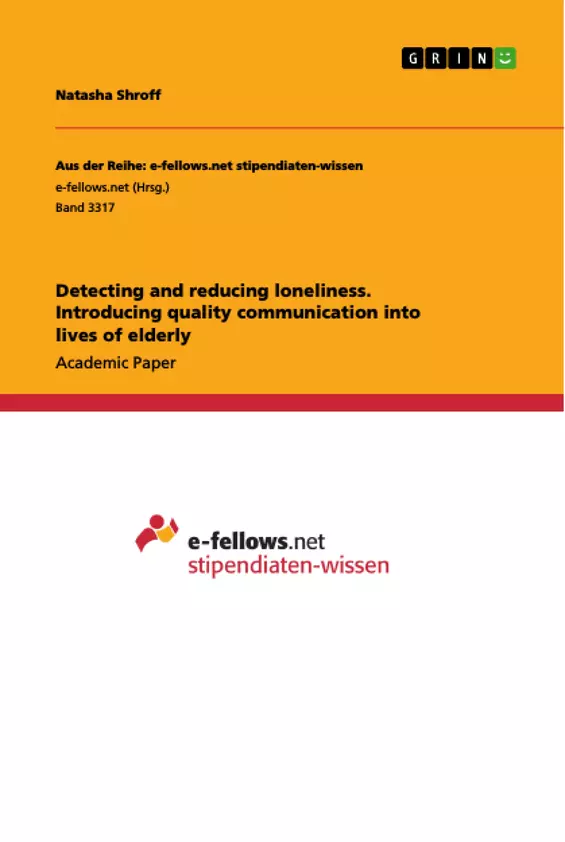For this work, a smart home-based system was designed to detect loneliness levels and reintroduce quality communication between elderly and their close family members by providing high-level interaction through a multi-modal speech and touch interface including notifications through ambient light panels and a home assistant to let elderly users interact with Shu Shi.
The interactive prototype is designed to detect loneliness based on sound sensors, temperature sensors and facial recognition features through the tablet application for the elderly user. Family members can share their mental presence with the elderly in various ways, for example through sending a commonly shared song to revoke positive memories in the elderly user and reduce the moment of loneliness. There are various types of interpersonal communication such as verbal communication or non-verbal communication: body language, eye contact, facial expression, outward appearance. The system focuses on providing asynchronous communication through various state-of-the- art modalities, designed for to meet the requirements of both elderly and family members.
This work covers the introduction and motivation related to the system, the literature review in related works, followed by the interaction and systems design, discussion and future work sections.
Inhaltsverzeichnis (Table of Contents)
- INTRODUCTION AND MOTIVATION
- RELATED WORK
- Reduction of Social Life
- Causes
- Consequences
- Countermeasures
- Levels of Loneliness
- Asynchronous Communication
- Current Technology Assistance Solutions for Elderly
- User Technology Acceptance among Elderly
- INTERACTION DESIGN
- User group persona
- Age 72
- Age 77
- Age 83
- Age 42
- User Group Requirements
Zielsetzung und Themenschwerpunkte (Objectives and Key Themes)
This report aims to address the pervasive issue of loneliness among independently living elderly individuals by proposing a smart home-based system named Shu Shi. The system focuses on reintroducing quality communication between elderly individuals and their close family members, ultimately enhancing their well-being and promoting independent living.
- Loneliness in Elderly
- Asynchronous Communication
- Smart Home Technology for Elderly
- User Acceptance and Interaction Design
- Multi-modal Communication
Zusammenfassung der Kapitel (Chapter Summaries)
The introduction lays out the motivation for developing Shu Shi, highlighting the growing concern of loneliness in elderly individuals and the potential of technology to address this issue. The related work section delves into various fields, including psychology, sociology, technology acceptance, and communication patterns among elderly. It discusses the causes, consequences, and countermeasures of social isolation, focusing on loneliness levels and the importance of asynchronous communication in bridging generational communication gaps.
The interaction design chapter focuses on the system's intended user groups: elderly individuals and family members. The chapter introduces user personas to illustrate diverse user needs and communication preferences, particularly the need for flexible communication options. The chapter concludes by outlining the system's requirements, which include multi-modal components such as ambient light panels and speakers, facilitating a seamless connection with the audio and notification function of the system.
Schlüsselwörter (Keywords)
The report explores the use of intelligent interactive systems to reduce loneliness, with a focus on smart home technology, quality communication, and multi-modal systems. The research highlights the role of ambient lights, speech-to-text technology, and asynchronous communication in enhancing the lives of elderly individuals.
- Arbeit zitieren
- Natasha Shroff (Autor:in), 2019, Detecting and reducing loneliness. Introducing quality communication into lives of elderly, München, GRIN Verlag, https://www.grin.com/document/512216



